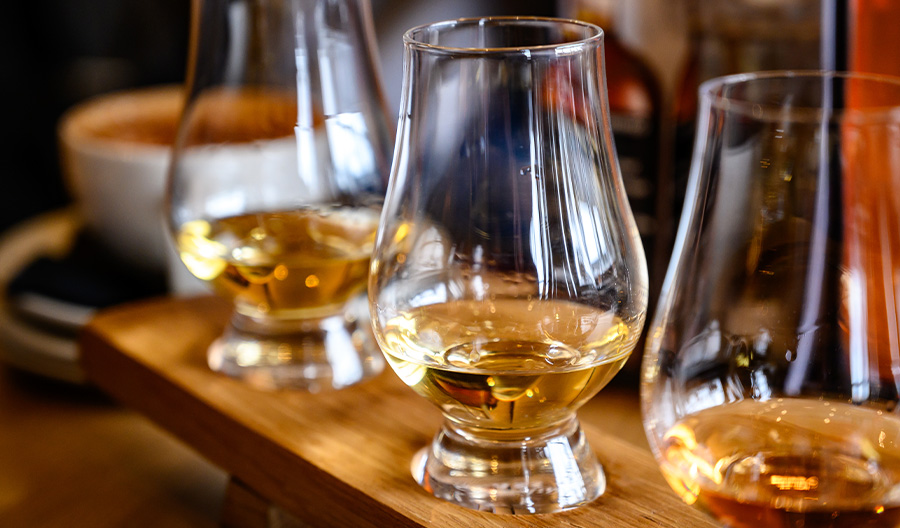Drinking a dram of good Scotch is an experience that doesn’t really need any translation. But whether or not you’re new to the category, you might encounter some unfamiliar terms. This guide will have you speaking Scotch like a master blender in no time.
What Is Scotch Whisky?
Simply put, Scotch is a type of whisky made in Scotland from a mash bill of water and malted barley or other grains. Scotch was distilled as early as the 15th century, when it was called uisge beatha, or “water of life.” But it wasn’t a protected spirit of Scotland until 1993, and its production parameters were strictly defined by the Scotch Whisky Regulations of 2009 (managed by the Scotch Whisky Association). These rules stipulate that Scotch must be matured for a minimum of three years in oak barrels, it must be distilled below 94.8% ABV and bottled at a minimum of 40% ABV, and it may not have flavorings or sweeteners added.
How Is Scotch Whisky Made?
For malted Scotch whisky, barley is steeped in water and spread out on malting floors, then mashed. The malt is dried in a kiln, which halts germination; the kiln might be fired by peat during this process, which contributes a smoky flavor. The dried malt gets turned into a flour-like grist in a rolling mill; it’s then moved to a mash tun and mixed with hot water to kickstart a chemical reaction that creates fermentable sugars. The resulting sweet liquid, known as wort, is then cooled, filtered, and added to washbacks, or containers made of sturdy materials like wood and stainless steel. Yeast gets added to the washback and fermentation occurs, in which the living yeast produces alcohol. A beer-like liquid, called wash, is distilled twice in single-batch pot stills, then goes into oak casks, where the maturation process begins. To legally be called Scotch whisky, the liquid must be aged for a minimum of three years.

Grain whisky, which typically includes some malted barley, undergoes a similar process. The non-malted cereals used, most often wheat, are precooked and added to the mash bill. The mashing and fermentation processes are similar to those of malt whisky, but the liquid is distilled in a continuous or Coffey still. Most matured grain whisky is used for blending.
Types of Scotch Whisky
These are the five categories of Scotch, as dictated by U.K. law.
Single malt whisky must be distilled at a single distillery with only water and malted barley, and it is made by batch distillation in copper pot stills. Considered the gold standard of Scotch whisky, this type accounts for just 10% of Scotch whisky production.
This type of Scotch is distilled at a single distillery with water, whole grains of malted or unmalted cereals besides barley (most often wheat), and sometimes malted barley in continuous column stills. Single grain whisky is relatively uncommon; you’re more likely to find grain whisky in a blend.
Blended Grain
Blended grain whiskies include single grain whiskies from multiple distilleries. In general, grain whiskies are less intense than malt whiskies.
Blended malt whisky comprises a mixture of single malt Scotch whiskies from various distilleries.
Blended Scotch
Blended Scotch is the most common type of Scotch whisky: It accounts for 90% of globally exported Scotch, and comprises a blend of single malt and single grain whiskies, with the exact components and proportions generally known only to the master blender.

